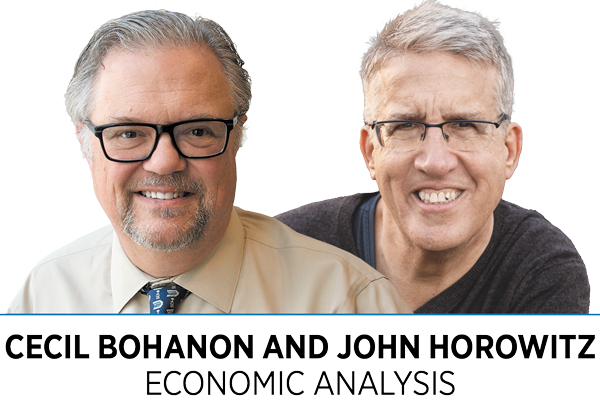Subscriber Benefit
As a subscriber you can listen to articles at work, in the car, or while you work out. Subscribe Now What economic concepts are most important for citizens? Here is our top 10 list of microeconomic concepts.
What economic concepts are most important for citizens? Here is our top 10 list of microeconomic concepts.
First, scarcity means we cannot get all we want for free. There must be some method of rationing. Prices, waiting in line, favoritism, taking turns, brute force or something else will emerge to ration goods and services.
Second, when competitive markets are used to deal with scarcity, prices indicate the degree of scarcity. Rising prices of resources, goods or services indicate increasing scarcity, and falling prices indicate declining scarcity.
Third, in competitive markets, surpluses are a sign that the price is too high, and shortages are a sign that the price is too low. Price changes eliminate the imbalances.
Fourth, rising prices persuade consumers to buy less and producers to produce more. Falling prices do the opposite. Using prices to persuade buyers and sellers is usually preferable to coercion.
Fifth, when a firm earns economic profits, within the confines of the “rule of law,” the firm is providing the consumer more value or using fewer resources. In a free market, economic profits attract new entrants, eventually undermining the profits that induce entry. Profits tend to dissipate because of competition.
Sixth, when there are no close substitutes for a firm’s products, it can charge more and make more profits in the short term. However, in the long run, the profits attract competitors who provide better substitutes, reducing profits.
Seventh, with limited information, it is hard to predict where people should invest to make profits. Greater uncertainty means profitability may depend more on luck than skill. Also, with more uncertainty, scammers, cheaters and con artists are likelier to take advantage of others.
Eighth, when someone else pays—such as parents, the government or insurance—people care less about the price, so they buy more and want better quality. Firms can and will charge higher prices when people do not care about the price. That is why insurance companies often expect the insured to pay part of the cost.
Ninth, tradeoff means balancing two or more things. In health care, there is often a tradeoff between cost, quality and access. For example, increasing quality often increases health care costs and reduces access.
Tenth, successful entrepreneurs create innovative products and new production and distribution methods that make consumers better off in the long run. However, most attempts at entrepreneurship fail.
Of course, the scarcity created by a Top 10 list leaves out many other vital concepts!•
__________
Bohanon and Horowitz are professors of economics at Ball State University. Send comments to ibjedit@ibj.com.
Please enable JavaScript to view this content.

I guess the point is that most of this depends upon “competitive markets,” the very conditions that are disappearing in the actual economy. How about a column explaining how the real economy, with its barriers to entry and massive consolidation, actually works?